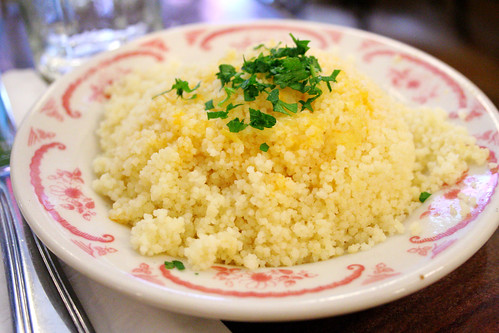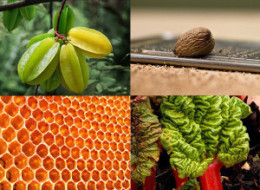Anybody watch the food network? One of my favorite shows is Barefoot Contessa with Ina. Here are two great recipes from her repertoire. Roasted Eggplant Caponata is a wonderful appetizer and vegetarian dish. Fresh Peach Cake is simply delicious and a wonderful way to complete a homestyle meal.
Ingredients:
-1 large eggplant (1 1/2 pounds)
-Olive oil
-4 ounces jarred roasted red peppers, chopped
-1/2 cup large green olives, pitted and chopped
-1 cup chopped yellow onion
-1/8 teaspoon crushed red pepper flakes
-1 tablespoon minced garlic (3 cloves)
-3 tablespoons minced parsley
-2 tablespoons pine nuts, toasted
-2 tablespoons freshly squeezed lemon juice
-2 tablespoons drained capers
-2 tablespoons tomato paste
-1 tablespoon red wine vinegar
-2 teaspoons kosher salt
-1 1/2 teaspoons freshly ground black pepper
-Toasted pita triangles, for serving
Directions:
Preheat the oven to 400 degrees F. Line a sheet pan with aluminum foil.
Place the whole eggplant on the pan, prick with a fork in several places, and rub with olive oil. Roast for 45 to 50 minutes, until the eggplant is very soft when pierced with a knife. Set aside to cool. Halve the eggplant, peel, and discard the skin. Place the eggplant, peppers, and olives in the bowl of a food processor fitted with the steel blade and pulse until coarsely chopped. Pour into a mixing bowl.
Meanwhile, heat 1 tablespoon of olive oil in a medium saute pan. Add the onion and red pepper flakes and cook over medium heat for 5 minutes, until the onion is lightly browned. Add the garlic, cook for 1 minutes, and add to the eggplant mixture. Add the parsley, pine nuts, lemon jice, capers, tomato paste, vinegar, salt and pepper and mix. Cover with plastic wrap and refrigerate for for a few hours to allow the flavors to develop. Taste for seasonings and serve at room temperature with toasted pita triangles.
If you want to make your pita triangles - buy pita. Cut into triangles. Brush each with olive oil and sprinkle with salt. Bake in a 375 degree F oven for about 10 minutes or until chips start to become golden. Serve with the caponata. Enjoy!
Ingredients:
-1/4 poind (1 stick) unsalted butter, at room temperature
-1 1/2 cups sugar, divided
-2 estra-large eggs, at room temperature
-1 cup sour cream, at room temperature
-1 teaspoon pure vanilla extract
-2 cups all-purpose flour
-1 teaspoon baking soda
-1 teaspoon baking powder
-1/2 teaspoon kosher salt
-1 teaspoon ground cinnamon
-3 large, ripe peaches, peeled, pitted, and sliced
-1/2 cup chopped pecans
Directions:
Preheat the oven to 350 degrees F. Grease a 9-inch square baking pan.
In the bowl of an electric mixer fitted with the paddle attachment, beat the butter and 1 cup of the sugar for 3 to 5 minutes on medium-high speed, until light and fluffy. With the mixer on low, add the eggs, one at a time, then the sour cream and vanilla, and mix until the batter is smooth. In a separate bowl, sift together the flour, baking soda, baking powder, and salt. With the mixer on low, slowly add the dry ingredients to the batter and mix just until combined. In a small bowl, combine the remaining 1/2 cup sugar and the cinnamon.
Spread half of the batter evenly in the pan. Top with half of the peaches, then sprinkle with two-thirds of the sugar mixture. Spread the remaining batter on top, arrange the remaining peaches on top and sprinkle with the remaining sugar mixture and the pecans. The batter layers will seem very thin, however, the cake will rise a lot due to the combination of baking soda and baking powder.
Bake the cake for 45 to 55 minutes, until a toothpick inserted in the center comes out clean. Serve warm or at room temperature.
Society/Economy/Politics: A great issue you can talk about while serving these dishes? Supporting local produce. Both recipes can be made with fresh, locally grown produce. It's a great way to help support your local economy and the quality of your produce will be much better than that of imported produce.


























